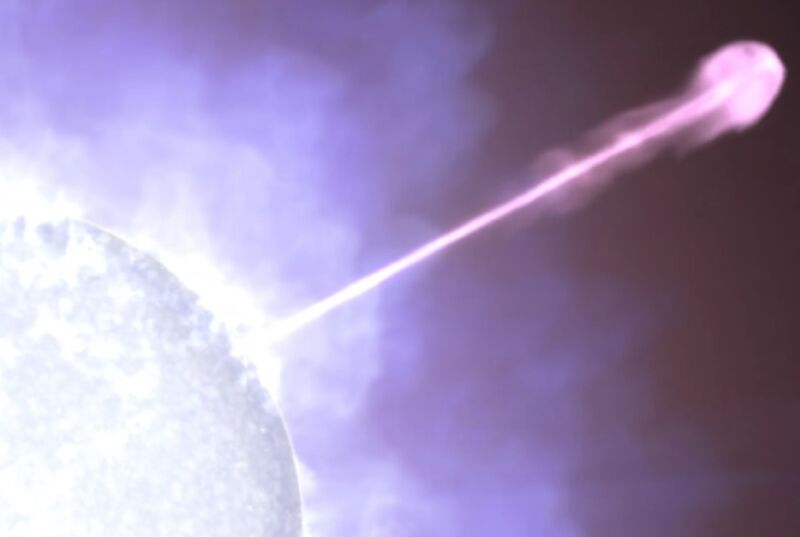Astronomers find first emission spectra in brightest GRB of all time

Enlarge / A jet of particles moving at nearly light-speed emerges from a massive star in this artist’s concept of the BOAT. (credit: NASA’s Goddard Space Flight Center Conceptual Image Lab)
Scientists have been all aflutter since several space-based detectors picked up a powerful gamma-ray burst (GRB) in October 2022—a burst so energetic that astronomers nicknamed it the BOAT (Brightest Of All Time). Now an international team of astronomers has analyzed an unusual energy peak detected by NASA’s Fermi Gamma-ray Space Telescope and concluded that it was an emission spectra, according to a new paper published in the journal Science. Per the authors, it’s the first high-confidence emission line ever seen in 50 years of studying GRBs.
As reported previously, gamma-ray bursts are extremely high-energy explosions in distant galaxies lasting between mere milliseconds to several hours. There are two classes of gamma-ray bursts. Most (70 percent) are long bursts lasting more than two seconds, often with a bright afterglow. These are usually linked to galaxies with rapid star formation. Astronomers think that long bursts are tied to the deaths of massive stars collapsing to form a neutron star or black hole (or, alternatively, a newly formed magnetar). The baby black hole would produce jets of highly energetic particles moving near the speed of light, powerful enough to pierce through the remains of the progenitor star, emitting X-rays and gamma rays.
Those gamma-ray bursts lasting less than two seconds (about 30 percent) are deemed short bursts, usually emitting from regions with very little star formation. Astronomers think these gamma-ray bursts are the result of mergers between two neutron stars, or a neutron star merging with a black hole, comprising a “kilonova.” That hypothesis was confirmed in 2017 when the LIGO collaboration picked up the gravitational wave signal of two neutron stars merging, accompanied by the powerful gamma-ray bursts associated with a kilonova.



